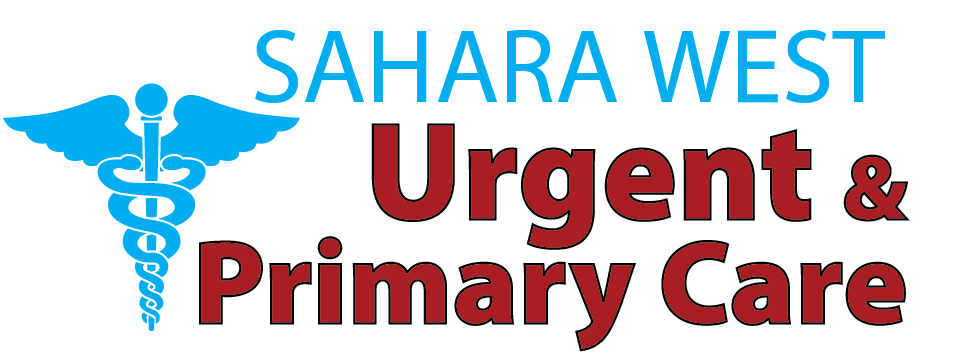Stitches, also called sutures, are special medical threads that are used in closing wounds too deep, wide, or complex to seal up and close off by themselves. They prevent hemorrhage, hold the edges of the wound in place, and greatly minimize the chance of infection or scarring. Internal wounds are treated by stitches that might not absorb or materials that dissolve.
What Are Stitches (Sutures)?
Sutures are of various categories, depending upon the location and extent of the injury for which they are used by the doctors. As an example, the face may require smaller stitches to reduce scarring of cuts, and joints may require stronger stitches.
The key to knowing when stitches are required is, first of all, the knowledge of what stitches are and why they are necessary in getting the wound to heal in the right way.
Why Proper Wound Closure Matters
Leaving an open wound when one needs stitches causes bacteria to interfere with your body and pose a risk of infections, leading to ineffective healing or permanent scars. Injuries that do not close up appropriately by themselves might take an extensive period to heal, and the tissue around the injury can be more prone to injury.
Stitches not only seal a wound, but they also provide the therapeutic environment to heal more quickly, efficiently, and safely. They keep tissues reattached, stop hemorrhages, and keep foreign particles of bacteria out of the wound.
Succinct closure of wounds is crucial in the mitigation of long-term outcomes besides curbing a minimum level of cosmetic impairment, particularly when it comes to the sensitive parts of the body, such as cuts on the face or hands.
How to Know If You Need Stitches
Persistent or Uncontrollable Bleeding
One of the most reliable indicators that a cut may need stitches is bleeding that doesn’t stop after 10 to 15 minutes of applying direct pressure. If the blood soaks through multiple layers of cloth or bandages, it’s a sign that the wound may be too deep for natural clotting to occur effectively.
In such cases, stitches can help control blood loss and allow the tissue to heal faster
Gaping or Separated Wound Edges
Look intimately at the wound. When the edges are not naturally adhering together or the skin is not tightly packed together, then the wound may also be too deep or too wide to heal itself. One of the most observable indications that one needs stitches is a gaping wound.
When stitches are applied, they serve as a form of bridge to unite the edges of the wound; this makes the skin and underlying tissues repair in a cleaner and shorter way.
Visible Fat, Muscle, or Bone
The presence of yellowish fatty tissue, muscle fibers, or bone in the wound is a sign of a clear injury that goes deep through numerous layers of skin. Such kinds of wounds require urgent medical assistance and professional sewing to avoid complications like infections or any loss of viability.
Deep or Long Cuts
The length is important as well as the depth. A cut that exceeds a quarter inch deep or lasts more than an inch is probably something that will need stitches. Tiny, minor cuts are normally treated by ordinary first aid, but the longer and deeper ones open the inner part of the body and have to be closed by a professional.
Wound Location
The nature of the injury on the body is decisive on whether one requires stitches or not. Wounds on the joints, hands, feet, face, or around the eyes or mouth normally need a medical closure. This is because there is more movement, sensitivity, and chances of infection in such places. These areas are so dangerous that even little incisions could require stitches to heal and prevent permanent damage.
Dirty or Contaminated Wounds
In case there is debris in a wound, it was inflicted by a rusty object, or a wound is an animal or human bite, stitches may be needed after wound cleaning. Such types of wounds are highly prone to infections, and antibiotics and suturing may be required. Never seal up such wounds without the supervision of a doctor.
Cuts That Need Stitches vs Ones That Don’t
Cuts That Likely Need Stitches
- Deep wounds that go through multiple skin layers
- Cuts with jagged, gaping, or widely separated edges
- Lacerations with visible fat, muscle, or bone
- Injuries caused by sharp objects like glass or metal
- Wounds located on joints, the face, hands, or feet
- Animal or human bite wounds
These wounds are prone to complications and often do not heal properly without medical help.
Cuts That Don’t Usually Need Stitches
- Superficial scratches or scrapes
- Paper cuts or razor nicks
- Small puncture wounds with minimal bleeding
- Cuts that stop bleeding quickly and close on their own
These can typically be treated at home using basic wound care methods such as cleaning, disinfecting, and covering the cut.
When Should You Get Stitches?
Time is of the essence as regards stitches. Preferably, the stitches are to be applied in six to eight hours after the injury. For other freeze wounds, e.g., clean facial wounds, the doctor can stitch up to 24 hours after the cut.
With the postponing of medical help, the risk of infection grows, and it is more difficult to sew the injury without leaving traceable scars. In case you are not sure of the timing to obtain stitches, you should err on the side of caution and make an appointment with a health provider as promptly as you can.
What to Do Before You See a Doctor
Clean the Wound
Wash the wound using clean or sterile saline. It is not recommended to scrub or apply harsh antiseptics on the wound. When cleaning is done, this helps lessen infection, and it helps doctors determine the necessity of stitches.
Apply Pressure to Stop Bleeding
Apply firm pressure with a clean cloth or sterile gauze. Raise any painful part above the level of the heart, if this can be done. In case the bleeding slows, you still ought to visit a doctor in case other signs indicate a deeper wound.
Cover the Wound
After bleeding slows, cover the area with a clean, dry bandage. This keeps the wound safe from further contamination while you head to urgent care or the ER
Check Your Tetanus Shot
Your physician may give you a booster course in the case that the wound you have is deep or has been left on you because of dirt, and a period that has lapsed since you last had your tetanus shot (five years). Prevention of tetanus is very important in deep wounds.
What Happens at the Doctor’s Office
When you finally get to a health institution, the medical practitioner will also examine the size, depth, and location of the wound, as well as the level of contamination. In case of stitches, they will use a local anesthetic to numb the region, then clean the wound and put on the sutures.
They may resort to alternative methods such as surgical glue or adhesive strips for some injuries. You will also receive post-surgery notes, including how to leave the wound clean, dry, and covered.
How Long Do Stitches Take to Heal?
Healing time varies depending on where the stitches are placed and your personal health. On average:
- Facial stitches: 5–7 days
- Scalp: 7–10 days
- Limbs or trunk: 10–14 days
- Joints, hands, or feet: 10–14 days
Your doctor will tell you when to return for stitch removal if non-dissolvable ones were used. Always follow their guidelines closely for best results.
Wound Aftercare Tips for Faster Healing
Proper aftercare is just as important as getting the stitches:
- Keep the stitched area clean and dry
- Change bandages as directed
- Avoid touching or scratching the area
- Watch for signs of infection like redness, swelling, or pus
- Don’t submerge the wound in water unless advised
- Limit physical activity that could reopen the wound
Following these steps can prevent complications and help you heal faster with minimal scarring.
Can You Stitch a Wound at Home?
No. Sewing up a wound at home is not highly recommended unless you belong to the medical field and you have clean and sanitary supplies. Some homemade sutures may get bacteria entrapped in the wound, and this may severely infect your wound, fail to heal, or even leave an indelible mark.
In case you believe that a wound requires stitches, wash and cover it before going to urgent care or an ER.
Conclusion
Being aware of how to know when you require stitches may save you the experience of infection, delayed healing, and scarring. Whether it’s a deep cut, uncontrolled bleeding, or an open wound, it is important to understand what to do and when to do it. Visiting a Laceration Repairs Clinic in Las Vegas can ensure that wounds are treated promptly and properly. It is best to be on the safe side of all. Prudence dictates that in a case of doubt, a medical practitioner should make the decision. The shorter the time of reaction, the sooner one heals and with fewer complications
To schedule your appointment with the highest standard of care, visit Sahara West Urgent Care on our website, where you can also explore more informative blogs.
Faqs
How do I know if I need stitches on my finger?
If the cut on your finger is deep, won’t stop bleeding, or exposes tissue underneath the skin, it likely needs stitches. Cuts over joints also typically require medical closure.
Can a wound heal without stitches?
Yes, if the wound is small and shallow and the edges stay closed naturally. However, deeper or longer wounds benefit from stitches to reduce scarring and infection.
What happens if I don’t get stitches when I need them?
Without proper closure, the wound could become infected, heal slowly, or scar badly. In some cases, it might even lead to loss of function or further complications.
When should I remove my stitches?
Follow your doctor’s advice. Most stitches are removed within 5 to 14 days, depending on their location and healing progress.
Can I go to urgent care for stitches?
Yes. Urgent care centers can treat most wounds that need stitches, and they’re usually faster and less expensive than ER visits.





